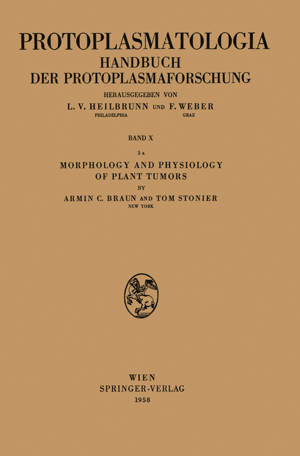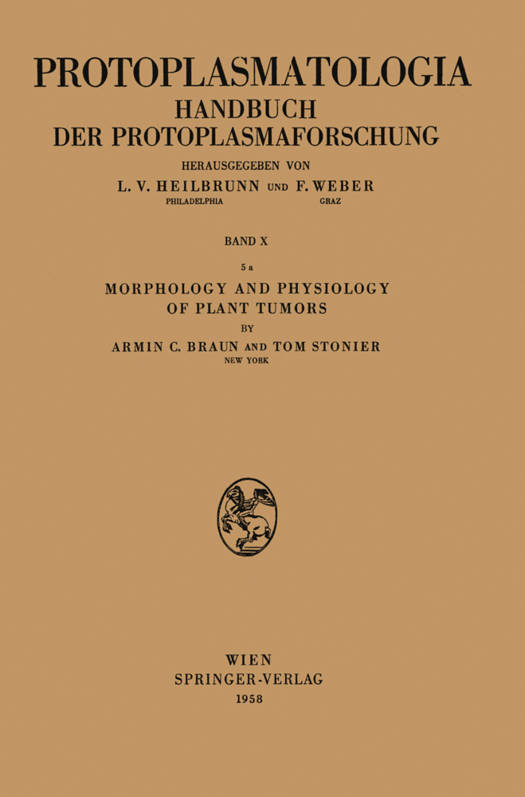
- Afhalen na 1 uur in een winkel met voorraad
- Gratis thuislevering in België vanaf € 30
- Ruim aanbod met 7 miljoen producten
- Afhalen na 1 uur in een winkel met voorraad
- Gratis thuislevering in België vanaf € 30
- Ruim aanbod met 7 miljoen producten
Zoeken
Morphology and Physiology of Plant Tumors
Pathologie Des Protoplasmas
Armin C Braun, Tom Stonier
Paperback | Engels | Protoplasmatologia Cell Biology Monographs | Pathologie des Protoplasma | nr. 10
€ 106,95
+ 213 punten
Omschrijving
In comparing plant and animal tumors it must bc remembered, however, that there are certain developmental and I'unctional characteristics C01- monly used in the differentiation of animal cancers that are more or less restricted to animals and cannot, therefore, be carried over and applied to plant tumors. These have been dealt with in detail by WHITE and BRAUN (1942) and by BLACK (1949), and will not be considered further here. The most essential characteristic of being able to grow independently of any morphogenetic restraint, upon which all of the other diagnostic features must ultimately depend, is, however, equaHy capable of expression in neoplasia of a11 higher organisms since it is a characteristic of the ceH itself. One striking aspect of tumor genesis is the multiplicity of diverse agencies that are seemingly capable of accomplishing essentially the same end result. Radiant energy, irritation, carcinogenic ehemicals, parasitic organisms, and virus es have all been shown to serve as incitors of tumors in animals. The effectiveness of these various I'actors in cliciting tumor formation appears to be a I'unction of the hereditary constitution of the host. Many of these same agencies have also beeIl found to be concerned etiologically in the inception of tumors in plants.
Specificaties
Betrokkenen
- Auteur(s):
- Uitgeverij:
Inhoud
- Aantal bladzijden:
- 94
- Taal:
- Engels
- Reeks:
- Reeksnummer:
- nr. 10
Eigenschappen
- Productcode (EAN):
- 9783211804926
- Verschijningsdatum:
- 1/01/1958
- Uitvoering:
- Paperback
- Formaat:
- Trade paperback (VS)
- Afmetingen:
- 170 mm x 244 mm
- Gewicht:
- 172 g

Alleen bij Standaard Boekhandel
+ 213 punten op je klantenkaart van Standaard Boekhandel
Beoordelingen
We publiceren alleen reviews die voldoen aan de voorwaarden voor reviews. Bekijk onze voorwaarden voor reviews.








